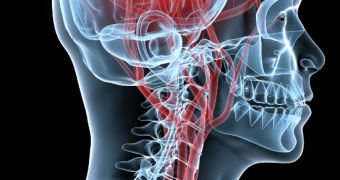According to a study recently published in the journal Archives of Neurology, dystextia (i.e. a condition which causes people to send rather nonsensical text messages) might indicate and help identify a major neurological issue such as a stroke.
As the specialists who looked into this issue explain, strokes are quite often signaled by dysphasia, which is best defined as the impairment of language and verbal comprehension as a result of a brain injury.
However, in the case of a 25-year-old pregnant woman, it was her sending peculiar text messages to her husband that ultimately saved her life. Huffington Post reports that, while trying to text a run-off-the-mill message concerning an appointment with her obstetrician, the woman ended up typing as follows: “Every where thinging days nighing. Some is where!”
Needless to say, the husband soon realized that something was wrong and the woman was taken to a nearby hospital. Once there, the doctors performed an MRI brain scan and found that she had in fact suffered a stroke earlier that day.
Looking back, the woman's feeling rather weak and her having trouble writing also constituted clues, yet such peculiar manifestations were easier to miss.
“Aphasia is a common manifestation of stroke, occurring in 21 percent to 38 percent of acute stroke patients. To our knowledge, this is the first report of aberrant text messaging being the presenting sign of acute ischemic stroke [i.e. a stroke that occurs as a result of the obstruction of a blood vessel supplying blood to the brain],” the researchers who published this study explain.
It is to be expected that, as ever more people rely on text messages when wishing to communicate, dystextia will be given due consideration by those researching neurological issues.
“As the accessibility of electronic communication continues to advance, the growing digital record will likely become an increasingly important means of identifying neurologic disease, particularly in patient populations that rely more heavily on written rather than spoken communication,” said study reads.

 14 DAY TRIAL //
14 DAY TRIAL //